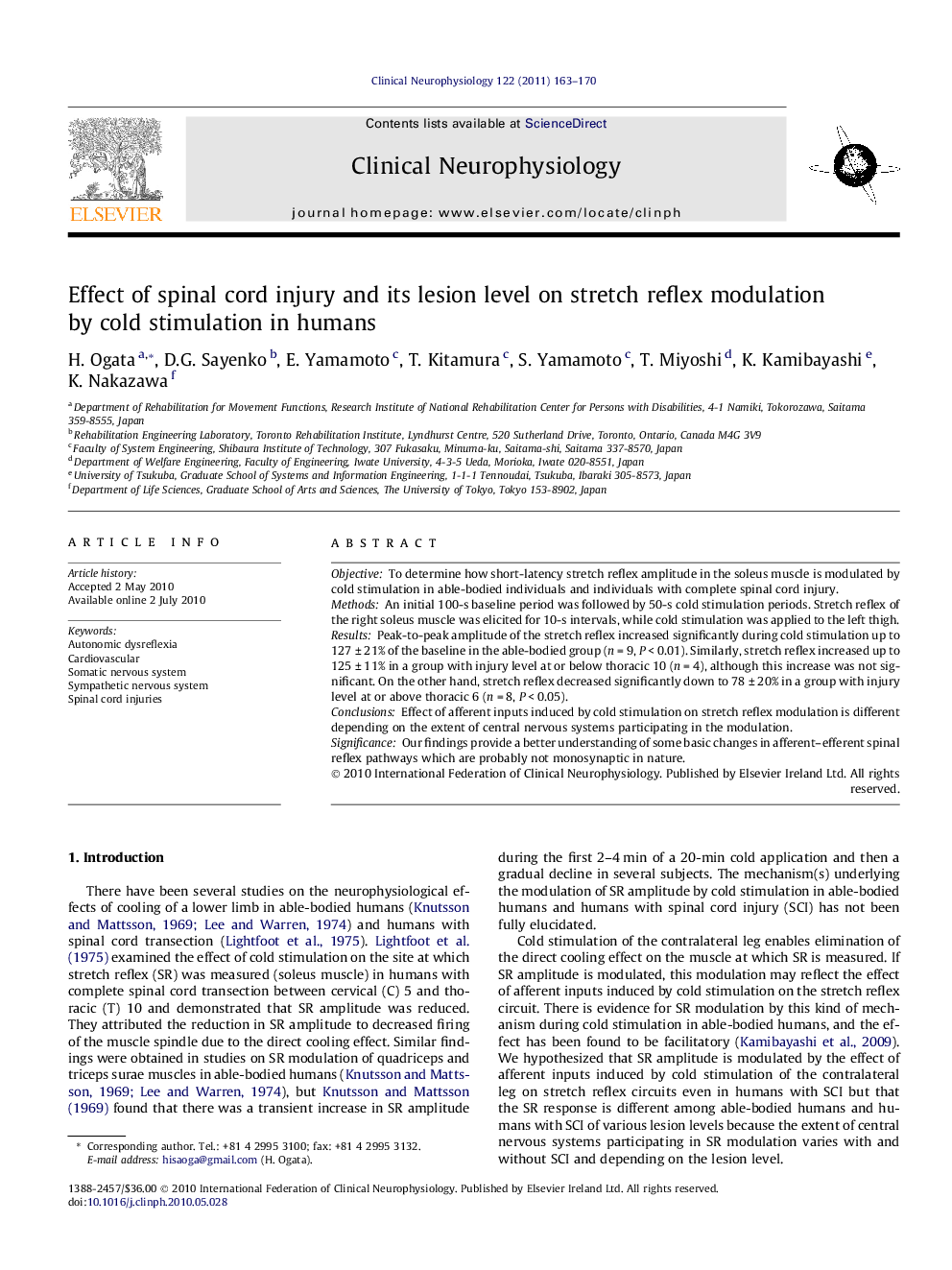| Article ID | Journal | Published Year | Pages | File Type |
|---|---|---|---|---|
| 3044257 | Clinical Neurophysiology | 2011 | 8 Pages |
ObjectiveTo determine how short-latency stretch reflex amplitude in the soleus muscle is modulated by cold stimulation in able-bodied individuals and individuals with complete spinal cord injury.MethodsAn initial 100-s baseline period was followed by 50-s cold stimulation periods. Stretch reflex of the right soleus muscle was elicited for 10-s intervals, while cold stimulation was applied to the left thigh.ResultsPeak-to-peak amplitude of the stretch reflex increased significantly during cold stimulation up to 127 ± 21% of the baseline in the able-bodied group (n = 9, P < 0.01). Similarly, stretch reflex increased up to 125 ± 11% in a group with injury level at or below thoracic 10 (n = 4), although this increase was not significant. On the other hand, stretch reflex decreased significantly down to 78 ± 20% in a group with injury level at or above thoracic 6 (n = 8, P < 0.05).ConclusionsEffect of afferent inputs induced by cold stimulation on stretch reflex modulation is different depending on the extent of central nervous systems participating in the modulation.SignificanceOur findings provide a better understanding of some basic changes in afferent–efferent spinal reflex pathways which are probably not monosynaptic in nature.
